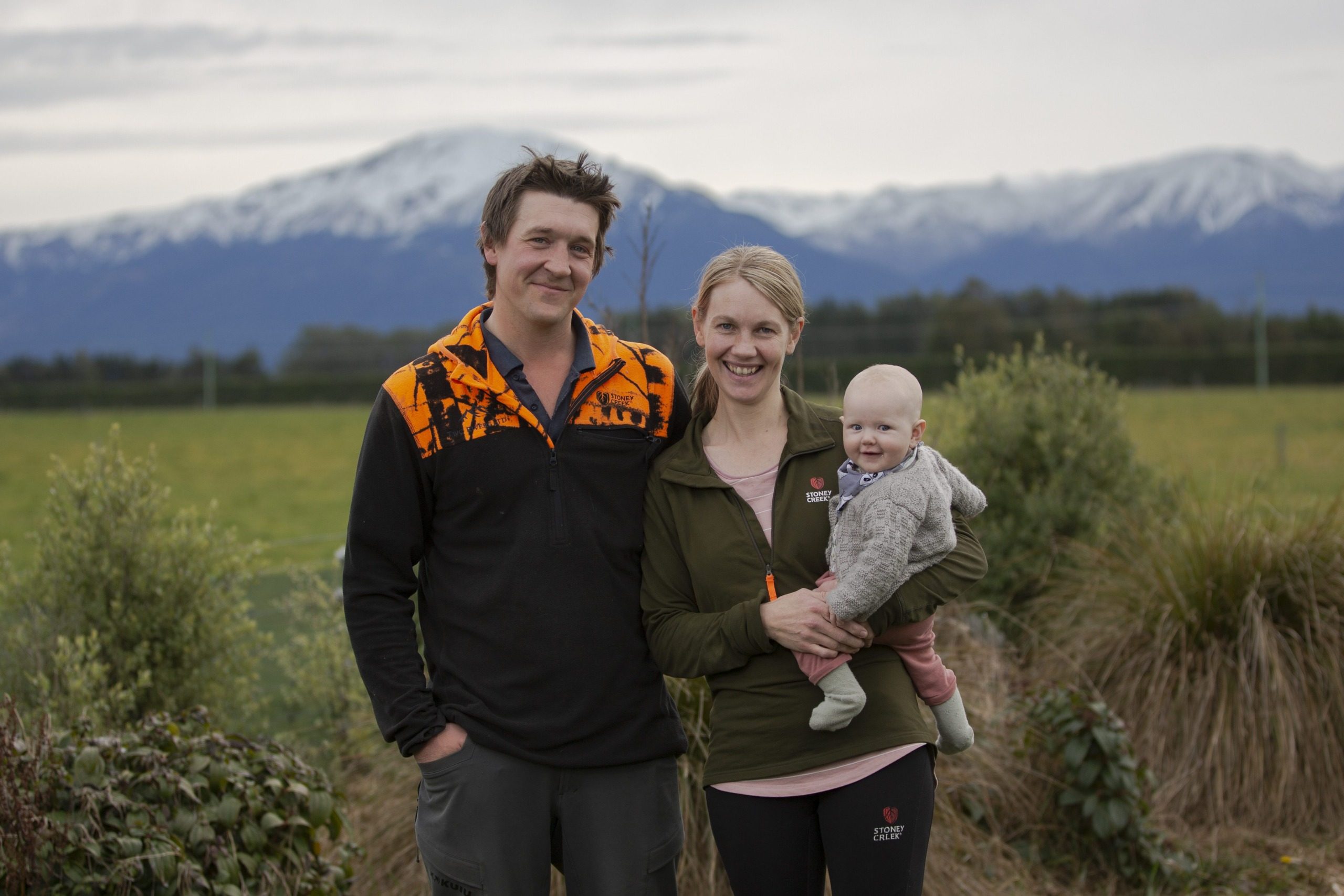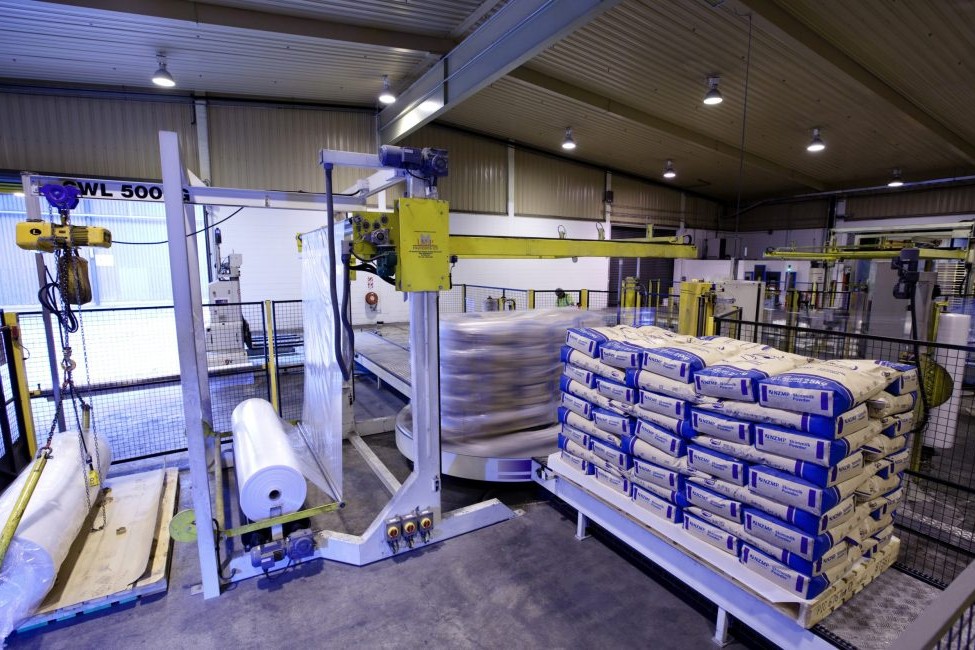Meeting worker expectations
A Canterbury sharemilking couple have adopted the Kanban workplace management system to run their farms. Anne Lee reports.

Organisation is a colourful affair at Jared and Victoria Clarke’s 2000-cow Canterbury sharemilking job.
That’s because the couple have embraced a Kanban system to manage a lot of the non-routine tasks on the two-farm, two 50-aside herringbone dairy operation.
It allows team members to choose what jobs they do and when they do them – all within reason of course.
The system is more typically used in tech-style corporate businesses and fits into what’s called an Agile management system.
The concept is one of a number to come from a DairyNZ initiative called New Workplace Designs which has looked at ideas that will help dairying meet workforce expectations as we head towards 2030. (see page 35)
Jared was one of nine South Island dairy farmers to join the initiative last year and says he got on board because creating better workplaces is vital to the success of the sector and dairying.
“Dairying is actually a great job with amazing opportunities but somewhere along the line we’re mucking something up as an industry because often dairying isn’t seen as a workplace of choice.”
Jared and Victoria have seen the positives for themselves and seized all the opportunities they could in their dairying career so far.
Having met at Lincoln University they worked for 2007 New Zealand Sharemilkers of the Year Matt and Julie Ross for eight years, working their way up the ranks, buying cows and leasing them back to the farm until they took the leap to large-scale sharemilkers themselves.
The pair are in their fourth season sharemilking for Richard and Chrissie Wright, also award-winning farmers, on their two adjacent farms near Mt Somers.
As well as stepping up to take on the cows when they took on the job, Jared and Victoria were also able to employ some of the existing team members.
They have nine full-timers in their farm team with some of the employee’s partners working casually on the farms too.
“We’ve got an absolutely amazing team here, they’re just lethal at getting these cows milked and we know anything we can do to keep them here and engaged has to be good,” Jared says.
As part of the New Workplace Designs initiative, DairyNZ introduced the farmer group to other businesses to see the kinds of systems they ran and if any of the ideas could be relevant on farm.
They travelled to Auckland and saw first-hand how Agile management systems were operating.
One example was at the telecommunications company Spark.
“That’s where we saw these Kanban boards and the way the teams were able to choose what task they’d take on – even the senior leadership team was using it.
“It gave people some autonomy and it also made the jobs or projects people were working on very visible to everyone in that team.”
Jared says the farmer group also had some great practical advice from Seamus Barden from consultancy firm Fr@nk on how to use the Kanban system.
“Because it’s often been used in those corporate-style settings it was good to get some really practical, real life type advice on how to use it – the type of jobs to use it for, how to make sure jobs were ready to go, what to do if they weren’t, how to make sure things are ticked off when they’re done.”
Jared was keen to give it a go back on the farm because not only would it empower people by enabling them to make their own decisions on what task they’d take on, it could also bring major efficiencies for both them, their managers and Jared.
“Historically I’d see things that I wanted done differently or things not getting done and I’d end up getting involved.
“We’d have a big push and a lot of energy and focus would go on that particular thing for a while.
“But really I was interfering in the guys’ day – I’d end up just getting too involved in something I didn’t need to be – for their sake and mine.
“The Kanban board gave us a new way to communicate and a way to make sure everyone knows what has to be done, who’s doing it and then that it is actually done.”
They don’t use it for the jobs that happen everyday such as milking or setting up paddocks.
Instead it’s for the other, non-routine tasks such as fixing a fence fault, weed control, replacing a tape gate, trimming tails, replacing a hose nozzle, checking inventory and ordering supplies or cleaning.
Over the peak of calving there’s not much time for anything except the routine, must-do everyday jobs but outside of that time the Kanban board has been adopted pretty enthusiastically.
Jared says they’ll talk about tasks that need to be done at regular meetings with their senior people and agree which jobs should go up on the board.
Ismael Mansilla is the manager on one of the units, Strathclyde farm, and says usually either he or his 2IC will write the jobs on Post-it notes and put them in the “Full to do list” column of the large whiteboard.
They’re put up with the highest priority at the top.
At the team meeting they might quickly run over the jobs to make sure people understand what they entail but because they’ve all been working with each other for numerous seasons now, they usually know what’s expected of them, what the job involves and what standard it should be completed to.
Both he and farm manager of the Wightmans unit Tharanga Senavirathna will move the Post-it note from the full to do list column to the next column – “the next two activities.”
Staff are expected to take on those jobs first but can also take one from the full list as well.
Once they’ve taken responsibility for a job they move the note to the ‘in progress” column and can put their name on it.
Ismael says the guys can quickly see what needs to be done and don’t need to be asking what they should do next.
“It saves time for them and us. If we think the job should be done by a set person, we write their name on it,” he says.
Tharanga says it makes work on the busy farm more efficient because straight away it’s apparent if something is stuck in the backlog section so the issue is dealt with quickly.
He and Ismael can see who is doing what at a glance too.
The team likes it because they are getting more of a say in their daily activities, Ismael says.
You choose
Another innovation aimed at empowering the team and creating innovation is ‘you choose afternoons’ where people have time off farm work to give them time to think about or create an idea that will help with how the farm operates.
It’s similar to an idea to come out of an Australian-based software company which was dubbed a FedEx day because it delivers overnight.
People get time during their work day to come up with their innovation and the next day they deliver their pitch to the rest of the team.
“There are just three rules for our ‘you choose’ afternoons – it has to be 100% their choice, their idea, it has to be of value to the farm operation and you have to tell the rest of the team how it works.
“It’s just for a few hours in the afternoon but people have come up with some great ideas.”
One was a simple fix that has saved hours of time and money.
When the farm was converted some of the fencelines were left with some of the original posts.
It’s meant that in a few spots, when the pivot rolls over the two-wire fence, the wire pulls out the insulators.
Wightmans’ 2IC Rudnei Souza Silva came up with a quick fix to simply move the insulator down further on the post next to where the pivot rolls through.
“It worked and we’ve saved a lot of insulators and probably 20 hours of work since he changed it last year, Jared says.
It takes a bit of time for people to get into the mode of coming up with ideas but Jared’s found they’re now thinking about improvements and innovations more and more as they go about their daily job.





